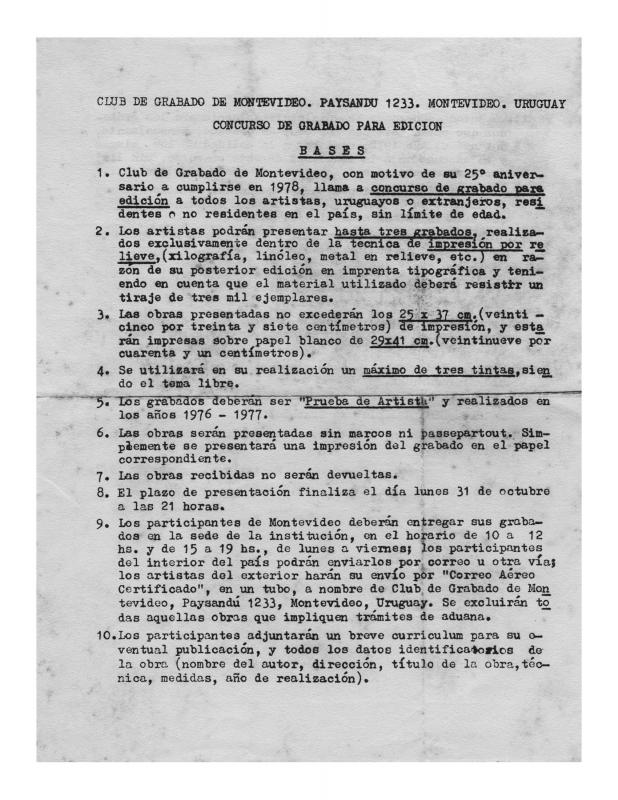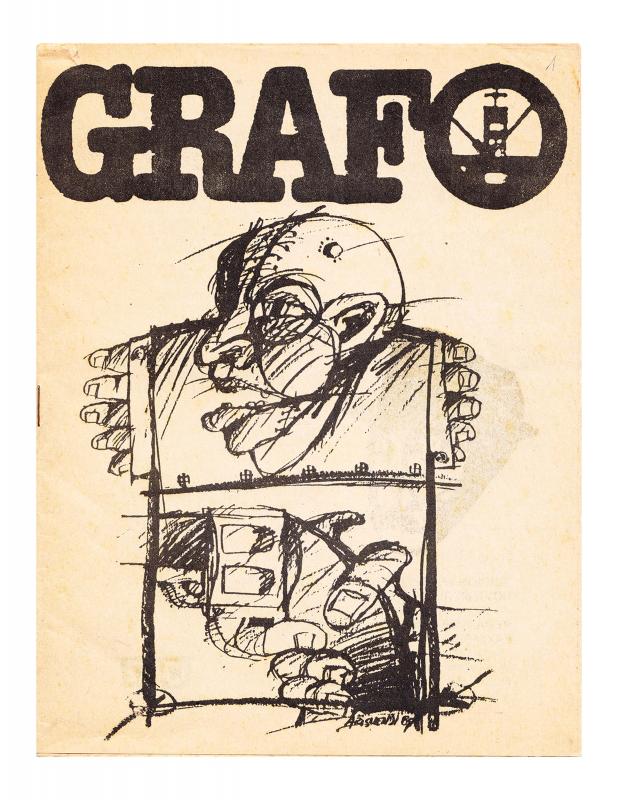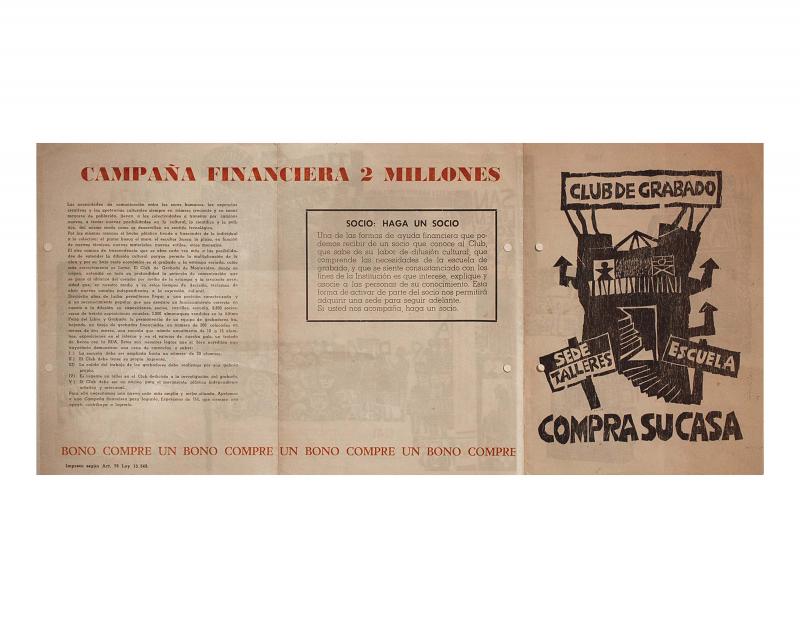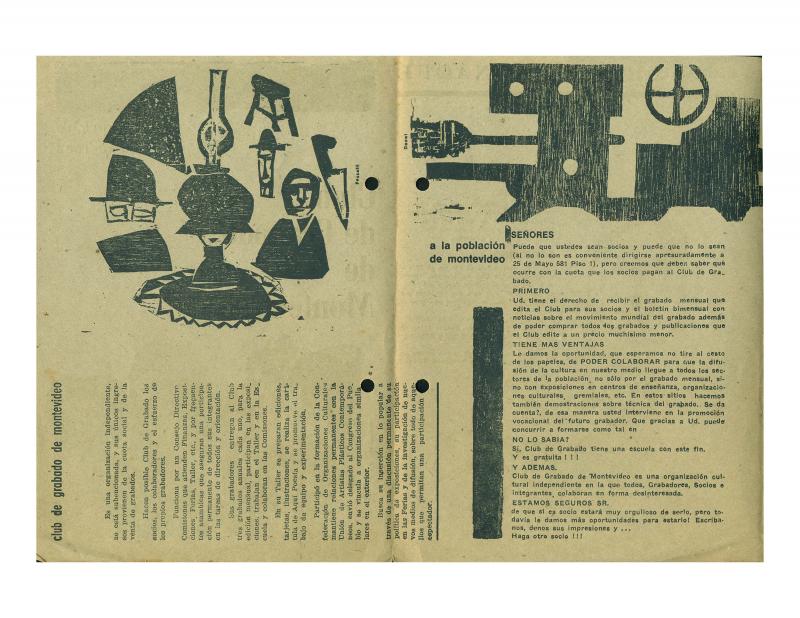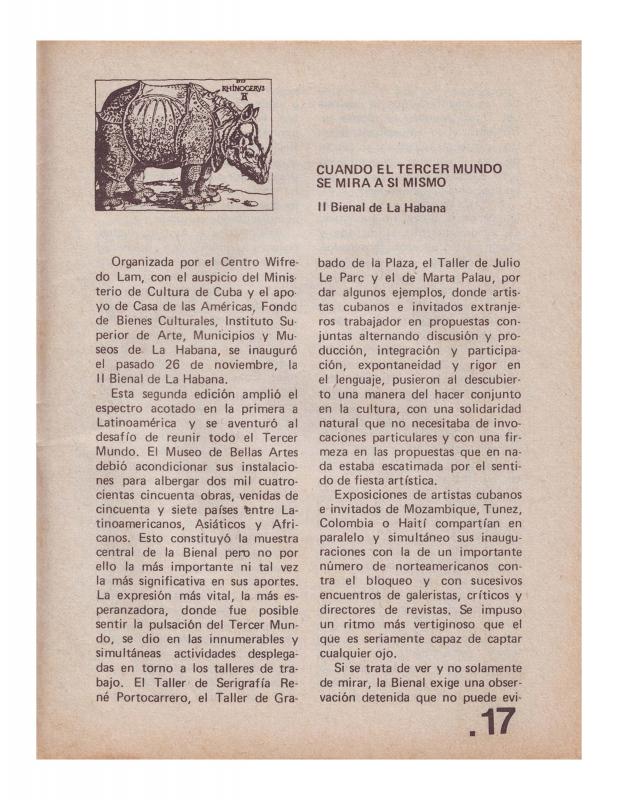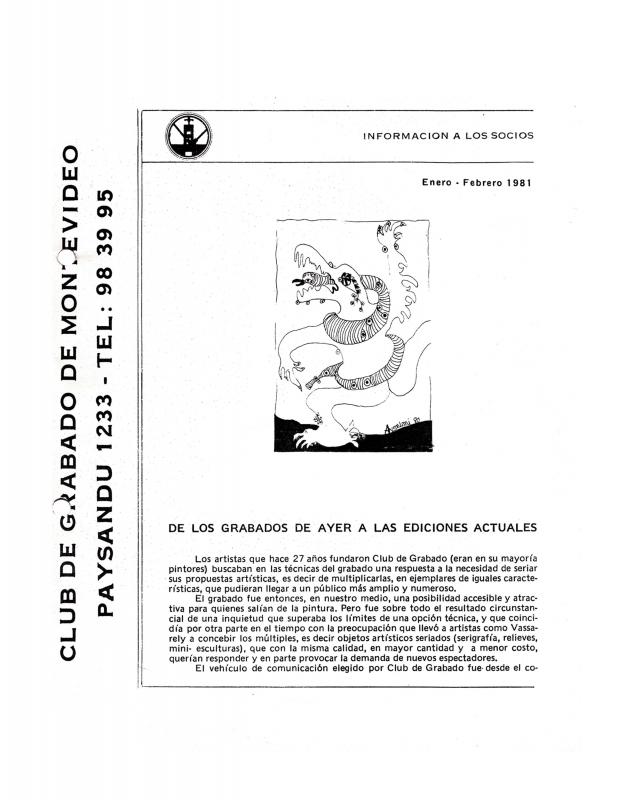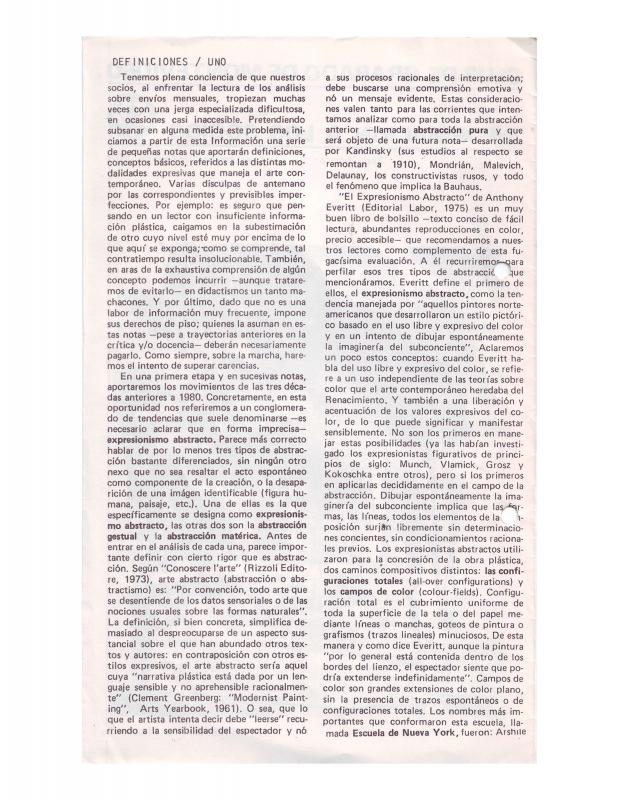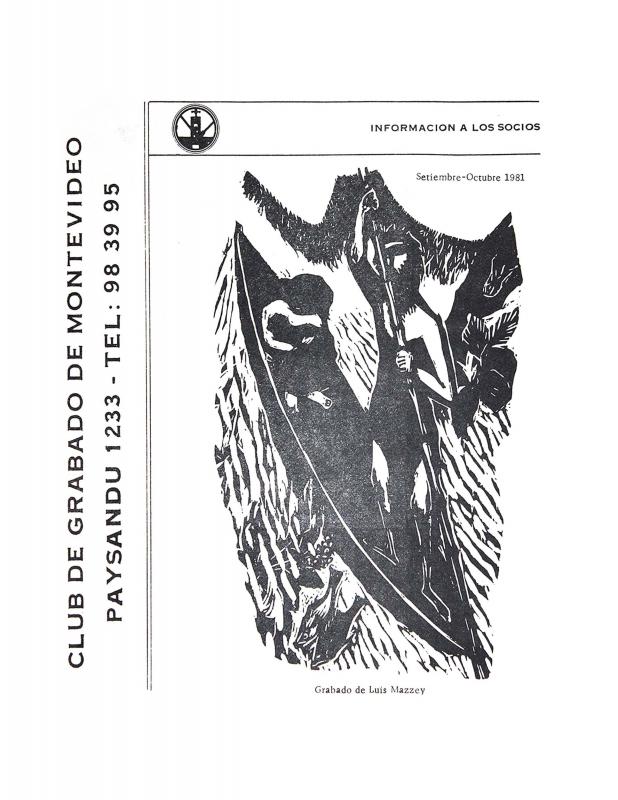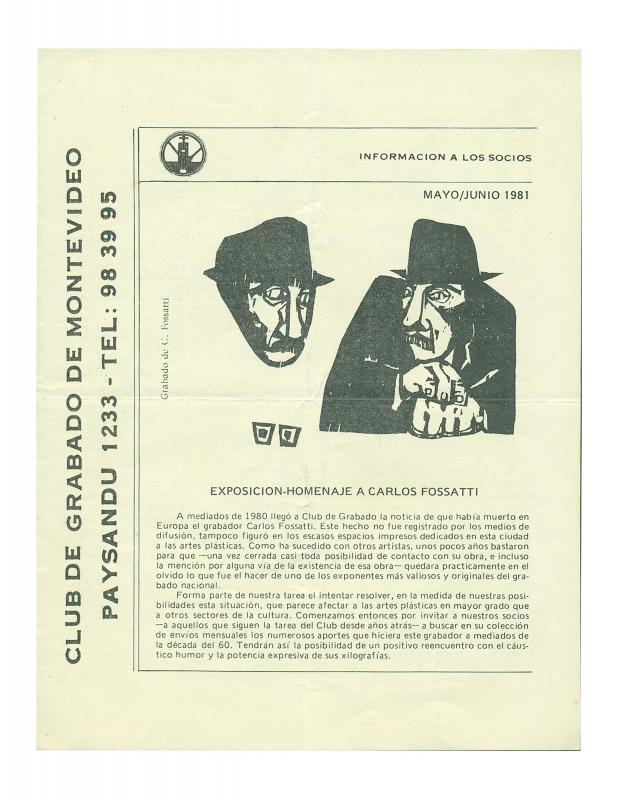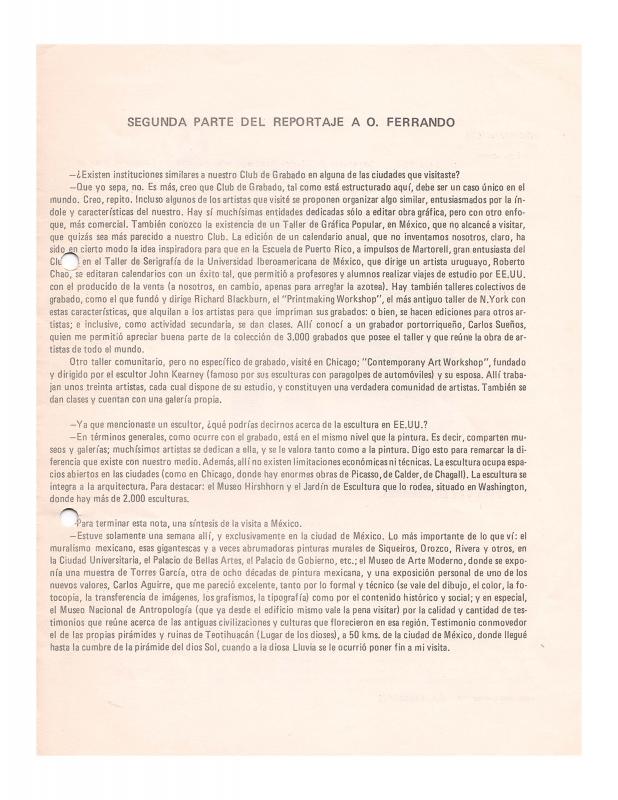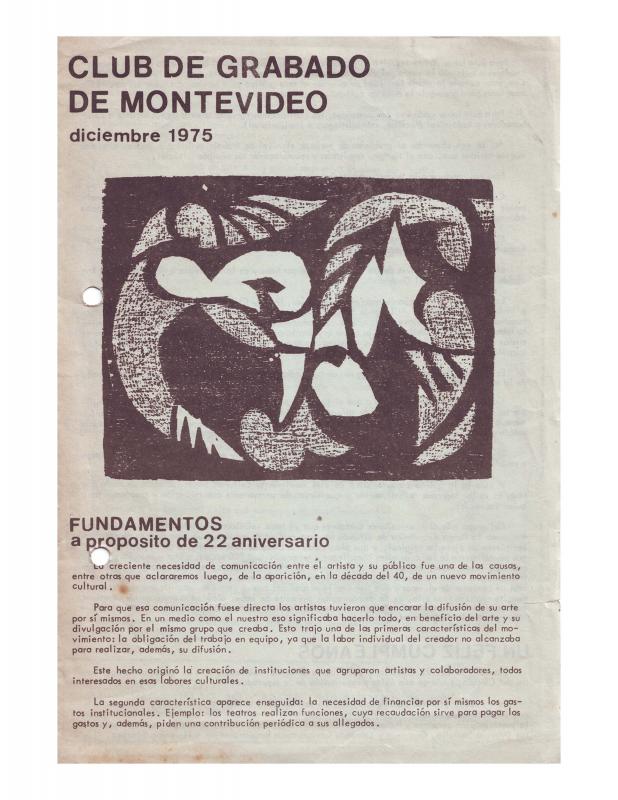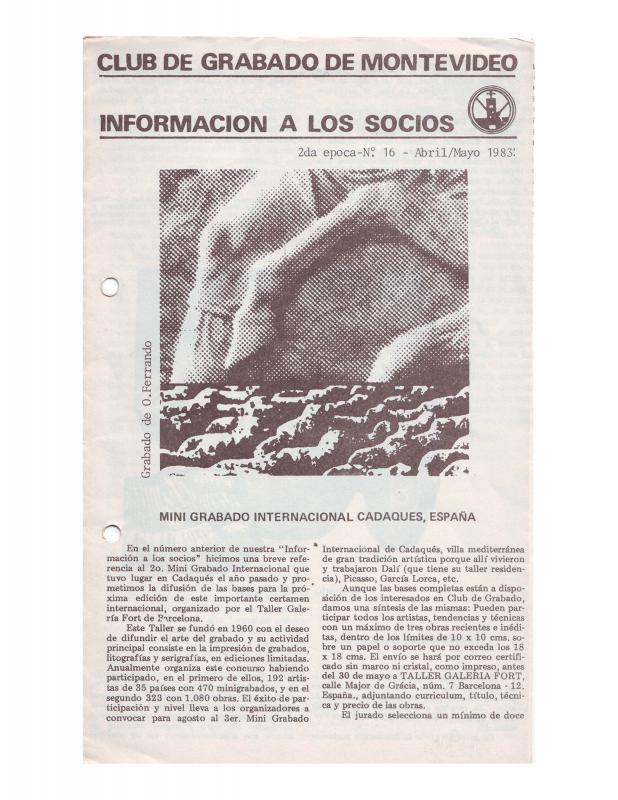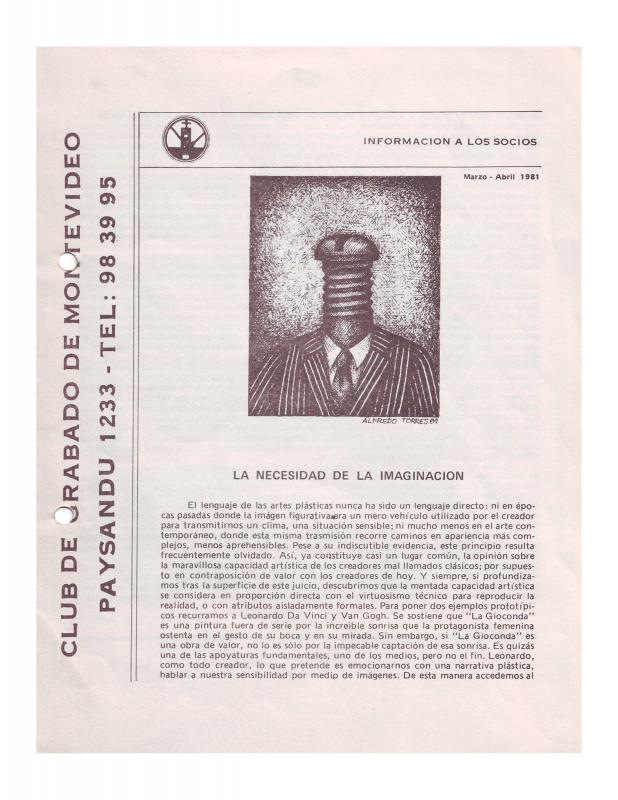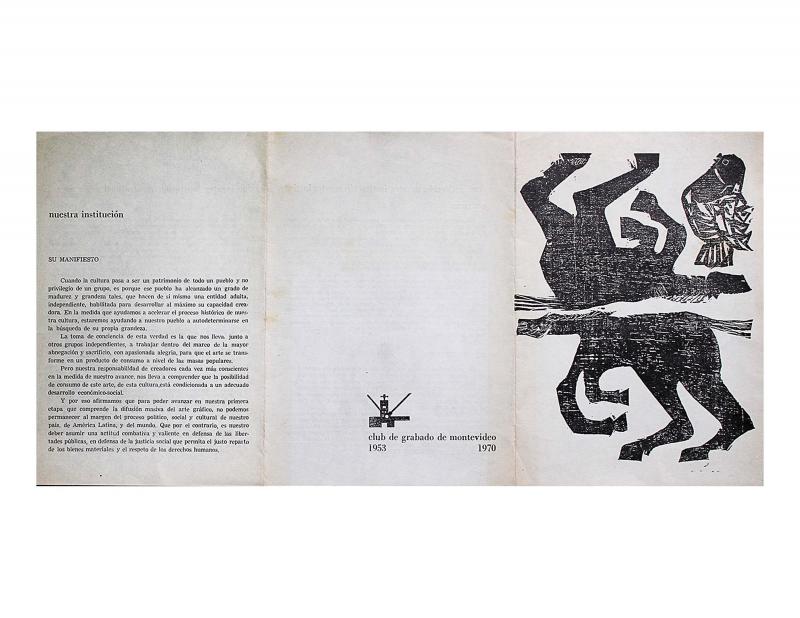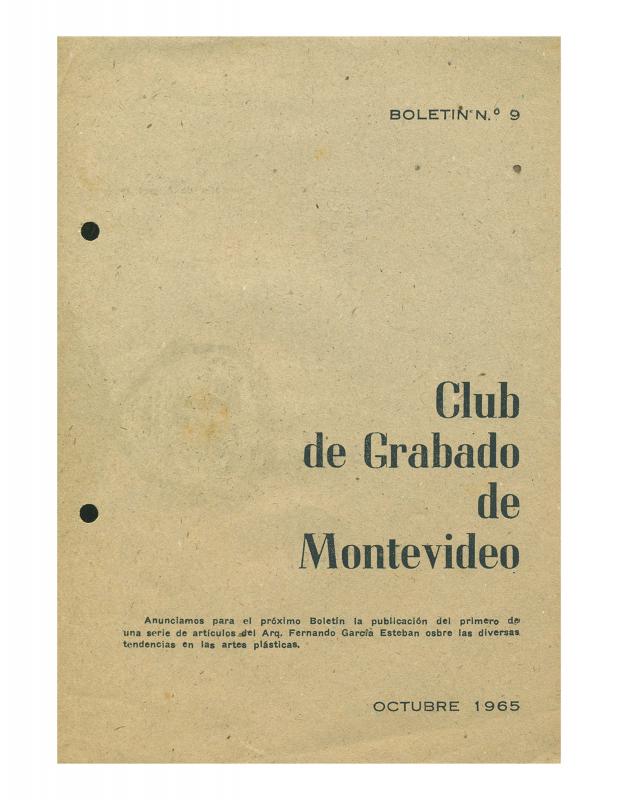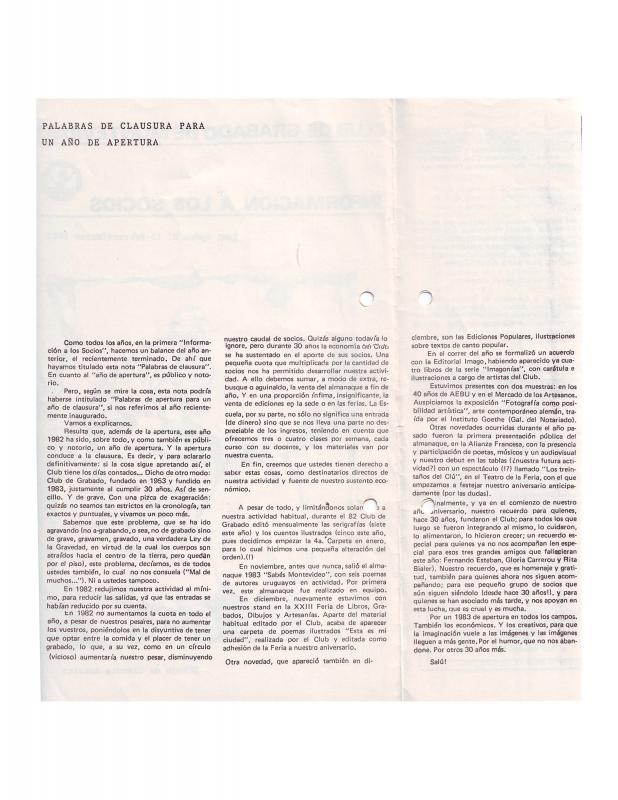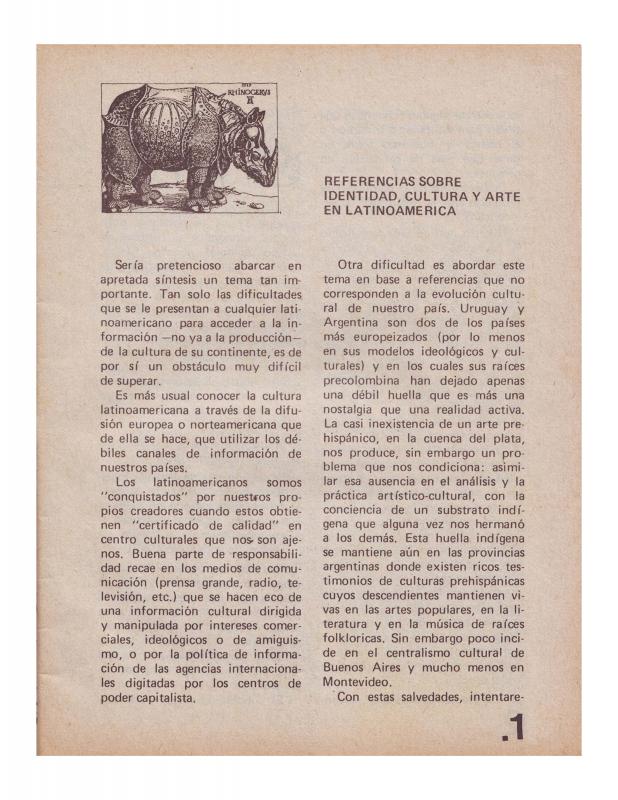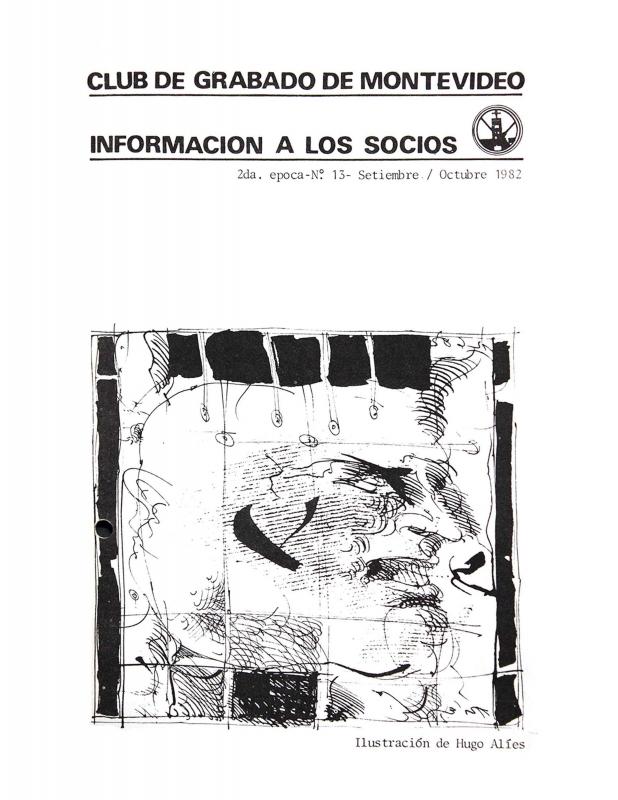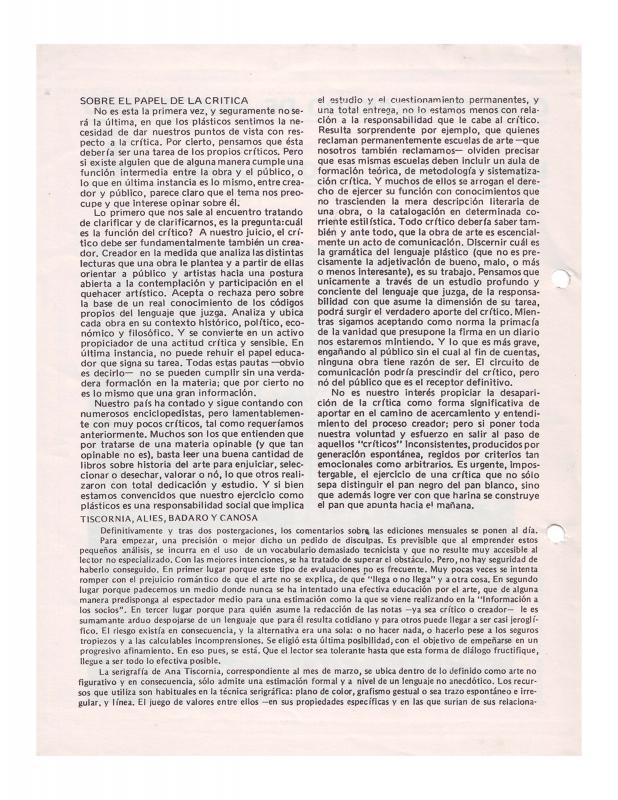In 1964, the CGM (Club de Grabado de Montevideo, a member-supported association founded in 1953) started publishing its Boletines, or newsletters. Some were brochures, while others were simple fliers consisting of a single folded sheet of paper. These Boletines (which ceased to be published in 1975 and then reappeared in the 1980s) provided news about the Club’s activities and reported on the changes taking place in the visual languages and the new serial techniques that circulated information about the aesthetic preferences of certain segments of Uruguayan society. These newsletters often undoubtedly contributed to the sociopolitical criticism that was in vogue at the time.
This Boletín includes a report on the agreement between the CGM and the Association of Visual Artists in the Democratic Republic of Germany. Under the terms of this agreement German prints will be exhibited in Uruguay, and the CGM will be able to exhibit works in Germany. This arrangement involves an exchange of prints and information, as well as exhibitions, publications, and critiques. The agreement mentions the possibility that Uruguayan artists might be able to get scholarships to study in Eastern Germany. This relationship attracted new members and students, and contributed to the growth of the CGM, which prompted the creation of the Escuela del Club de Grabado. The team of instructors assigned to the School was able to provide students with comprehensive training that helped printmakers find employment in a professional capacity. The study plan described in the “Escuela” [School] section of the document required students to be trained in both drawing and woodcut printing so that they were exposed to the more complicated aspects of graphic design as well as the range of technical skills required in the field of contemporary printmaking. The courses were taught by printmakers who were members of the Club.
[As complementary reading see, in the ICAA digital archive, the following articles published by the Club de Grabado de Montevideo: “Concurso de grabado para edición” (doc. no. 863481); “13 años de actividad de Club de Grabado de Montevideo” (doc. no. 1183571); “El arte correo en el Uruguay” (doc. no. 1191850); “Club de Grabado compra su casa” (doc. no. 1192649); “Club de Grabado de Montevideo 22 Aniversario 1953 - Agosto 1975” (doc. no. 1183514); “Club de Grabado de Montevideo a la población de Montevideo” (doc. no. 1183124); “Cuando el Tercer Mundo se mira a sí mismo. II Bienal de La Habana” (doc. no. 1184459); “De los grabados de ayer a las ediciones actuales” (doc. no. 1191787); “Definiciones / Uno” (doc. no. 1189065); “Entrevista a Luis Mazzey” (doc. no. 1186991); “Entrevista a Óscar Ferrando” (doc. no. 1186747); “Entrevista a Óscar Ferrando [segunda parte]” (doc. no. 1186802); “Fundamentos a propósito de su 22 aniversario” (doc. no. 1182640); “Mini Grabado Internacional de Cadaqués. España” (doc. no. 1191135); “La necesidad de la imaginación” (doc. no. 1190793); “Nuestra institución” (doc. no. 1182010); “Los nuevos movimientos de las artes” (doc. no. 1182868); “Opiniones (I)” (doc. no. 1185411); “Palabras de clausura para un año de apertura” (doc. no. 1191167); “Referencias sobre identidad, cultura y arte en Latinoamérica” (doc. no. 1183641); “Reflexiones en torno a la supuesta crisis de las artes plásticas” (doc. no. 1185539); and “Sobre el papel de la crítica” (doc. no. 1187071)].

